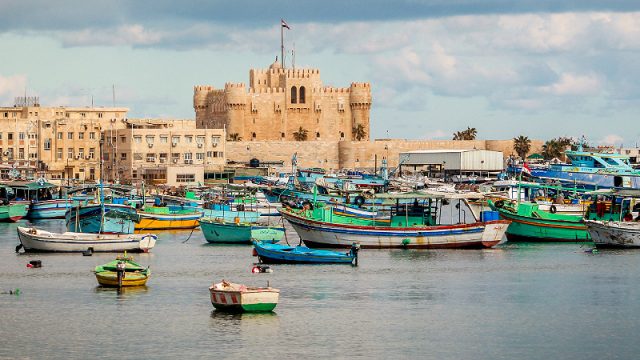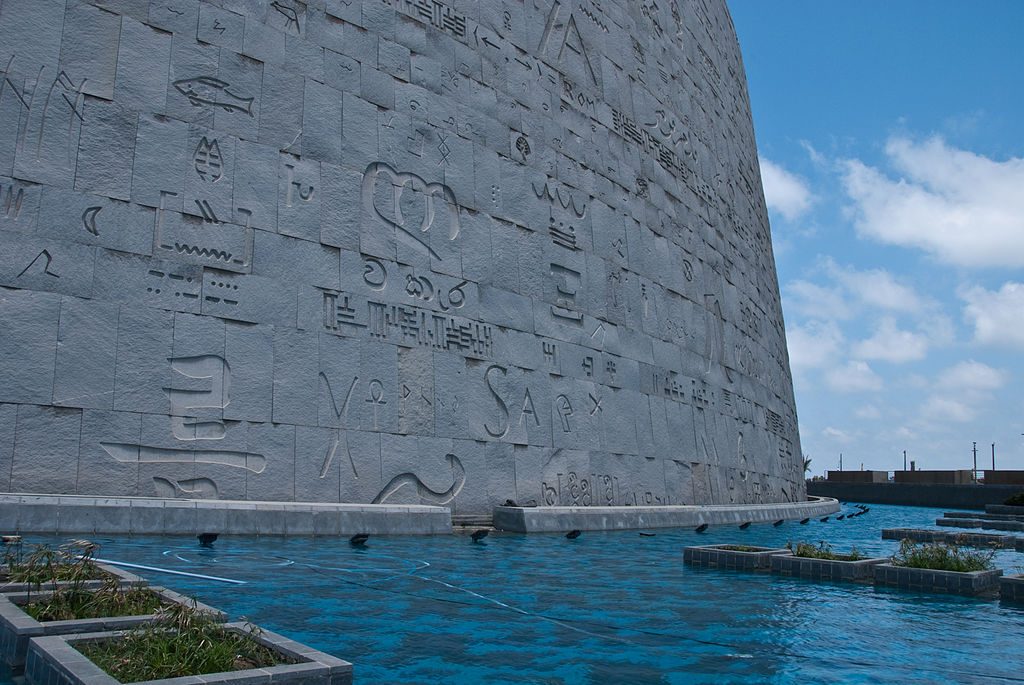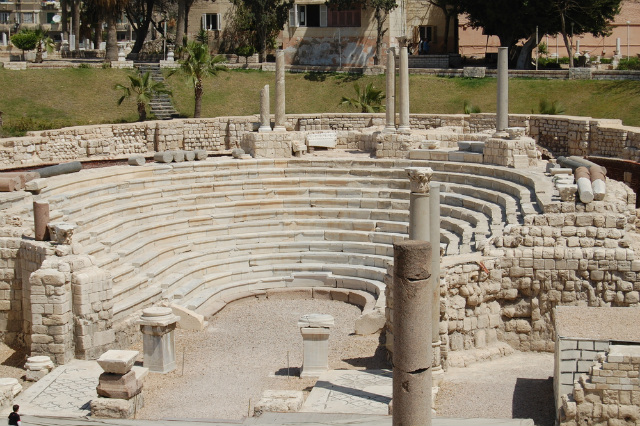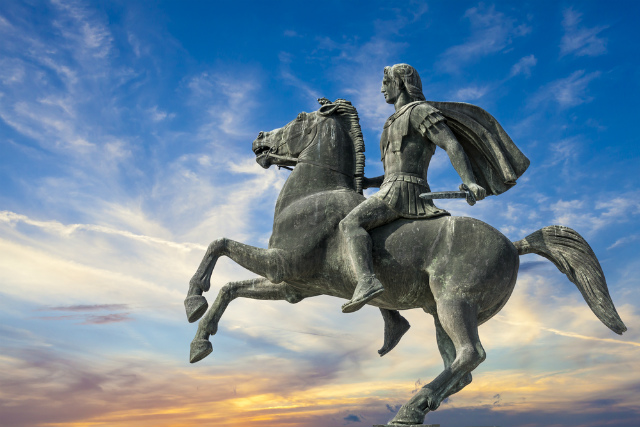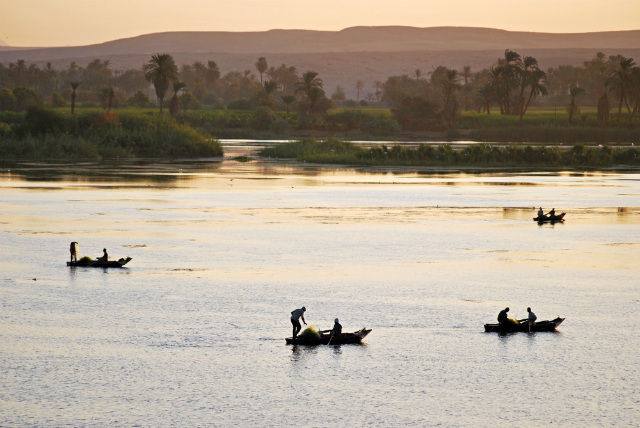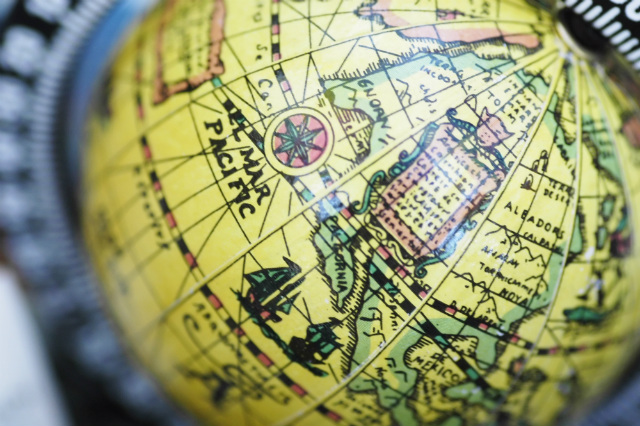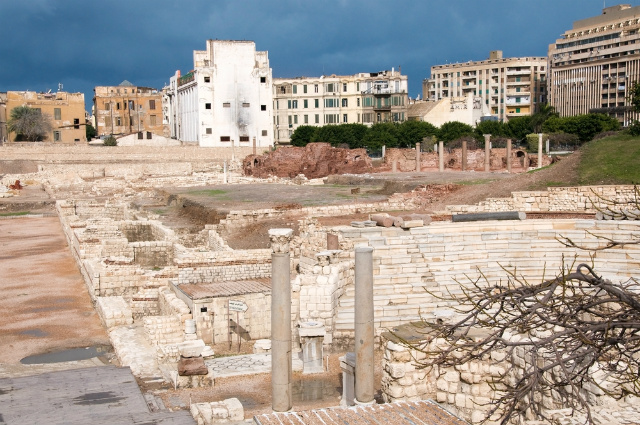Once one of the wealthiest cities in the world, centuries of conquests, natural disasters and modernization have forever changed ever-evolving Alexandria. However, it’s still the largest city in Egypt and the country’s largest seaport, welcoming domestic and international tourists alike. There’s also plenty to discover in this ancient city that now plays second fiddle to Cairo. Here are 10 things you probably didn’t know about Alexandria, Egypt.
It’s home to one of the world’s largest necropolises
Although it was discovered by chance in 1997, the Gabbari necropolis is one of the largest in the world and dates back to 3 B.C. Archaeologists have discovered messages left by grave robbers spanning several centuries.
There is a new Great Library
Although the ancient Great Library of Alexandria was destroyed, a new library called the Biblioteca Alexandrina was completed in 2002. Inside, you’ll find a reading room that can accommodate 2,500 readers and eight million books, three museums, a planetarium, various rotating exhibitions and an extensive series of cultural events.
It has the oldest tram system in Africa
Alexandria has the oldest tram system in Africa dating back to 1860, making it one of the oldest in the world as well. The main line was first drawn by horse, then steam, and finally electrified in 1902.
It was once the grandest city in Egypt
During the time of the Ptolemaic Kingdom, Alexandria was second only to Rome in size and wealth. Cairo wouldn’t come about as a large city for several more centuries.
There were already other cities in the area when it was founded
Although most history books state that the city was founded by Alexander the Great (which it was), there were already several thriving port cities just east, near the western edge of what is now Abu Qir Bay.
After its prime, it was relegated to a small fishing village
Although Alexandria was an ancient version of New York City, after the capital was moved in 641, the city went into centuries of decline. When Napoleon arrived, he came upon little more than a small fishing village. Fortunately in the 19th century, it was revived as part of an industrialization program.
The circumference of the earth was first calculated here
Eratosthenes first calculated the circumference of the earth in Alexandria by measuring how far camels traveled through the desert. Alexandria was also home to other famous mathematicians such as Euclid.
It’s the country’s largest port
Alexandria is the largest port in the country and has a total of four harbors. The Western Harbor alone handles 60-70% of the entire country’s imports and exports.
Very little of the ancient city survives
Due to centuries of major battles in the city, unlike other ancient cities in the region, very little of Alexandria is left. And what conquering armies didn’t demolish, earthquakes shook the ground and finished off the rest.
And it’s hard to find ancient artifacts, too
The growing modern city of Alexandria is directly above the ancient one, making it extremely difficult for archaeologists to perform digs in the area. It may be centuries before all the hidden catacombs and pottery of the ancient city are found.
More from AFKTravel:
10 Things To Do In Alexandria, Egypt’s Second City
The Best Luxury Hotels In Alexandria
15 Myths About Ancient Egypt, Debunked
This article was originally published on August 17, 2015.
Want to discover the finer side of Africa? Sign up for our weekly newsletter.
